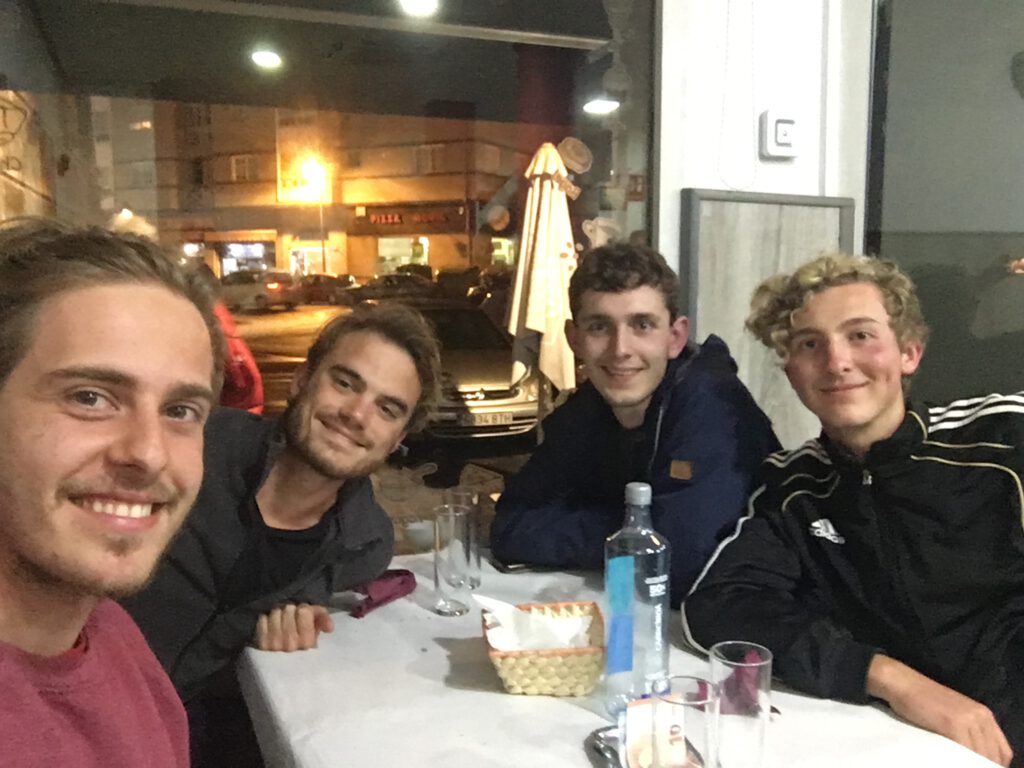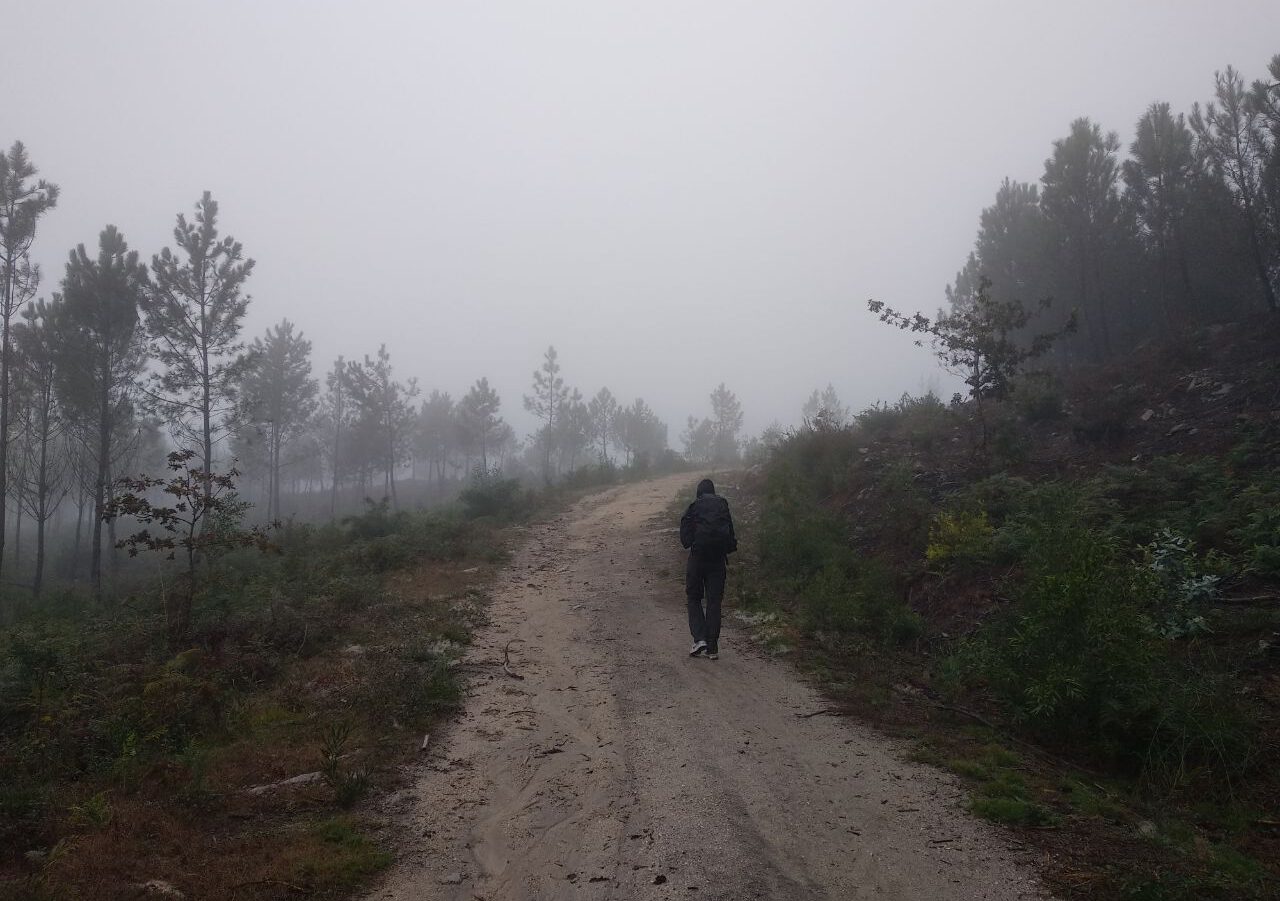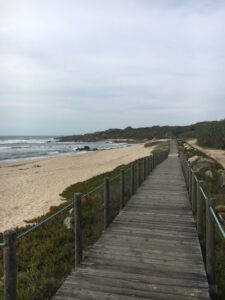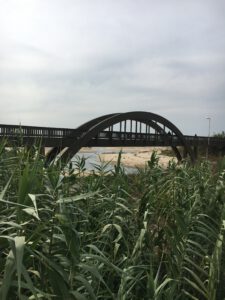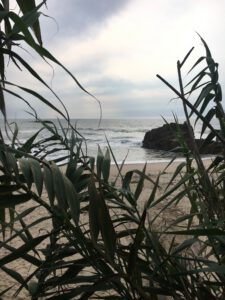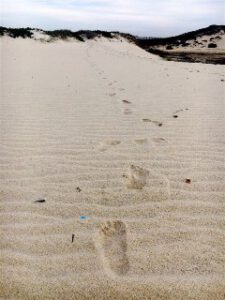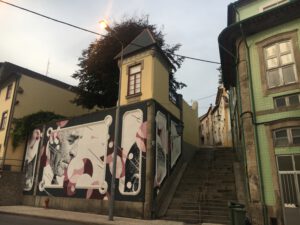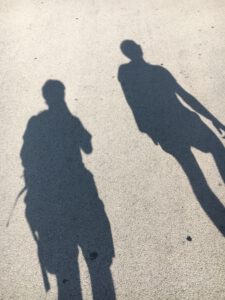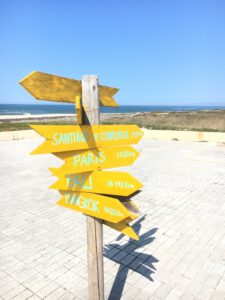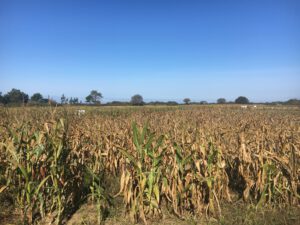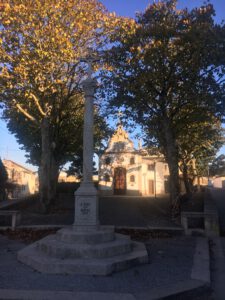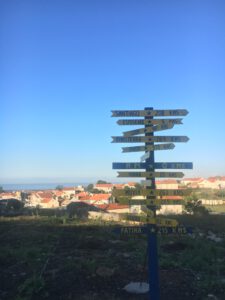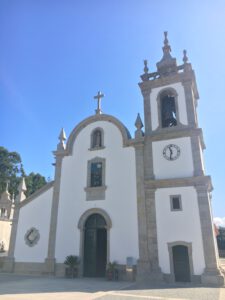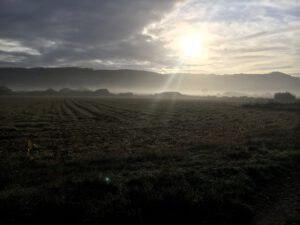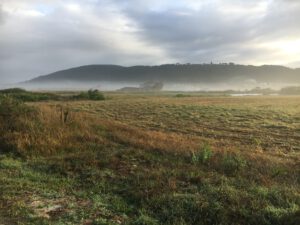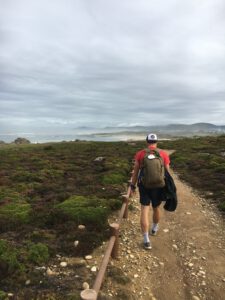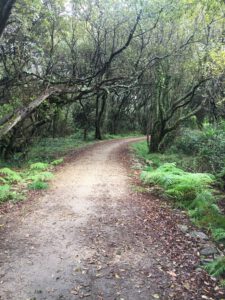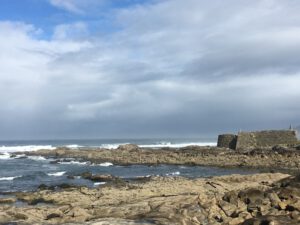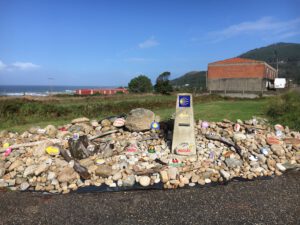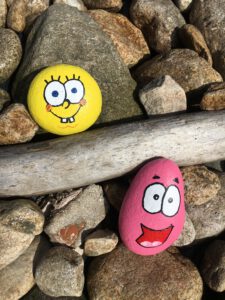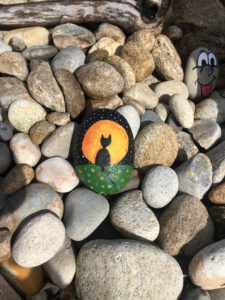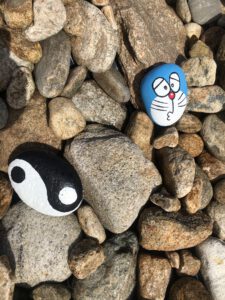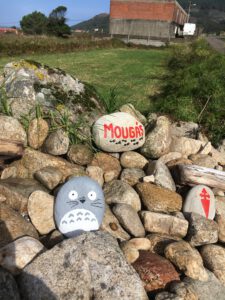Yes! This is not a word I would use ordinarily. But “Yes” was my answer when one of my best friends, Edoardo, proposed me to do the Camino De Santiago. We were super-excited to start this adventure, and when the Pandemic spread all over Europe, I was worried the whole trip was going to have to be cancelled. In the end, we managed to arrive in Porto and to start this experience, often considered an initiation route by young Europeans.
Starting from the Sao Bento station we headed west, to reach the coast, passing by some of the suburbs of the city. It was definitely not the prettiest landscape we encountered on the route, but it had some nice houses. Once reached the coast, in Matosinhos, we met a fellow that would have accompanied us for a big part of the journey: the Atlantic Ocean. Glancing at its vastity after more than one hour of walking in the suburbs filled our souls with joy and enthusiasm. We walked on a wooden gangway on the sand, which was almost perfect. I say almost, because at the very beginning, just after the lighthouse of Matosinhos, the gangplank is surrounded by the sea on the left and by a giant refinery on the right.
Besides this little inconvenience, the landscape is absurdly enchanting. After passing through small villages of fishermen with their little, colourful houses on the shore surrounded by ingenious lobster cages, crossing wooden bridges, and walking by native houses transformed in museums of traditional arts and craftmanship, just before arriving at our first destination, we decided to walk the last kms directly on the shore. We took off our shoes and let the sand massage our feet. Leaving our talks for the day and our tiredness behind us, together with our footprints. Every new beginning makes a person euphoric and guided by this euphoria we walked for 39 km on the very first day. Maybe, thinking about what would have happened later, it was not the best choice, but yet we arrived in Vila Do Conde, where the grandiose Santa Clara’s convent welcomed us at the entrance of the village, just past the Ave river.
Vila do Conde is a nice small village and the only attraction is an old vessel in the port. From Vila do Conde, crossing wheat fields while waving at and chatting with farmers and breeders we moved to a very tiny village, next to the sea, Marinhas. Here, apart from our hostel, there was only the church of “San Miguel”. Fun fact: we arrived there right on the day when, according to the Catholic church, the Archangels are celebrated, so the only two streets which composed the village were lightened for the celebration.
On the third day, the way tilted a bit upward, but in order to start properly the day, we had a little break for breakfast. We stop by at the bar “O Lampao”, which in my opinion is a must-see for anyone who attempts the “Camino Portugues de la costa”. Filled with pictures of Ernesto Che Guevara (and sometimes also of Fidel Castro), with a world map on the wall, where you can see the countries of origin of the pilgrims who visited the place (there were even some from Greenland!!), and decorated with symbols of the Camino and a strange 3-wheels bike at the entrance (always accompanied by a Cuban and a Bob Marley flag), the bar is already a tidbit all on its own. The owner is also a very kind person, always available to help you, and if he can’t satisfy your requests, he will find a way to ensure you’ll be happy during the stay.
After this small stop, we kept walking, passing by old churches on the top of hills, small villages, and strange works of art made with shoes to show the way. After passing a long steel bridge designed by Gustave Eiffel, we arrived in one of the finest hamlets we found on our way: Viana do Castelho.
A small sore point here, the Albergue dos Peregrinos, where usually one can find accommodation for 5/6 euros, costed 20 euros per person and was not even among the best we found along the route.
The cost of these “Albergue Municipal” raised because of Covid-19, but usually it was among 6-8 euros per person. This was maybe the only big mistake we did during the holiday. However, in this hostel we met our very first stranger on our way. I had been wondering where other pilgrims were since the first moment, because we didn’t meet any, but soon after my first complaint we met two other French pilgrims, who were coming back towards Porto. As soon as we spotted them, one of them collapsed to the ground, she fainted!! We tried to help them and called the medical aid, but after that I stopped complaining about the fact that we did not meet anyone else along the route.
Anyways, in the Albergue de Peregrinos in Viana do Castelho, we had the pleasure to meet a young woman from Berlin. We had some nice chat, even though she criticized the way I used to compute the expenses, and we started living the real spirit of the “Camino de Santiago”: the sharing and communion. We had a beer in the historic centre of the medieval village, where she introduced us to other pilgrims she met on her way. It was astonishing to see how at the same table we could speak Italian, French, English, German, a bit of Hungarian and when the waiter was with us even a bit of Esperanto (according to him, it was Italian). We were deeply saddened when the morning after we had to leave this marvellous village.
But the way in front of us was still too long to think about ceasing our march. We started very early in the morning, the sun still had to raise (Edoardo loves walking in the freezing cold of the morning, I hated it and him in those moments), left the city centre and headed towards the coast, and walked along the sea, through shores and fields brushed by the fog, which, similarly to a ghost, was gently escaping after the appearance of the first sunrays. On our way to Caminha we encountered another travel companion, the rain, which caught us not so inadvertently.
I have been a scout for 11 years, and Lord Robert Baden-Powell, the movement founder, used to say: “There is no such a thing as good or bad weather, but good and bad equipment”. Well, we did not have the right equipment, we could only protect the backpacks and the upper part of the body, but our shoes weren’t waterproof. But B.P., as the scouts call their founder, said a much more important quote, which also became the movement’s motto: “Be Prepared”. And we were prepared for it, we knew it would have arrived sooner or later, as Dante said “The arrow, seen beforehand, slacks his flight”, so, in the end, it was not a big problem for us.
We managed to arrive to Caminha and take the boat to cross the Minho, the river which separates Portugal from Spain. The boat takes 15 minutes to cross it, but thanks to the time zones it took 1 hour and 15 minutes to us, so keep it in mind if you are planning to do the Camino Portuguese da Costa, because you can happen to find the hostels on the other side closed. Crossing the Minho, you pass from Portugal to Spain, from Francesinha (if you don’t know what it is, read my previous article) to “Pulpo a la Gallega”, from Obrigado to Gracias and from SuperBock to Estrella. Also the environment started to change, there are more forests and meadows. For the night, we slept in A Guarda, near to Castro de Santa Trega, a Galician Fort build in 100 B.C.

On the fifth day, the due stop-over should have been Mougas, at 20 km from A Guarda. However, we arrived there relatively early at 12 a.m., and we were welcomed by the stone in Mougas signalling the way, surrounded by thousands of pebbles, some of them painted with cartoon characters and symbols. Since we didn’t want to waste a sunny day perfect for walking, we decided to keep on going and arrived in Baiona, 15 km after. Note that if you plan the trip with google maps, you’ll be very wrong and underestimate the distances. The Camino does not follow the algorithms Google suggests, and usually, it takes more time and more km to walk along the Camino. Another thing to keep in mind, above all in this piece of the way, is that the Camino is in general well signalled, but just like the staircase in Harry Potter, the arrows like to change. It can be useful to download the app “Caminotool”. In Baiona, we had the chance to taste another Galician’s speciality: the Zorza, a marinated diced pork loin, topped with paprika.
Always because of lack of time, the day after we were forced to put toghether two stages of the walk, thus left Baiona early in the morning and through the Romanic bridge of San Pedro de la Ramalosa we headed towards Vigo. Vigo is the biggest city in Galicia and indeed it took us more than 2 hours to cross it. But it deserves a stop-over, it is a lively town on the sea, with its energetic and vivid nightlife, and a lovely historical centre. Unfortunately, we could not stop there, due to lack of time, so after lunch we kept going in order to reach Redondela.
In Redondela, there is nothing very special, but before arriving there, the Camino passes by a viewpoint, called “The Best bench in Redondela”. This is a small green bench, for maximum two people, nested on a rock at the top of a mountain. It has a 180 degrees view on the “Ria de Vigo”, a huge river where Vigo sits on, and it should be astonishing to just sit there and rest the feet and the eyes with such a view. Unluckily, we arrived to the bench in the exact moment when heavy rain started. We were unable to see anything, due to the presence of clouds, fog and rain, but trust me, if the weather conditions allow it you should go there.
Luckily, though, the surprise did not finish for the day, and in the hostel, we met two German guys, who became our friends along the route. Similarly to what happens during life, in the Camino you sometimes cross your path with people who will join you for part of the way. This is what happened to us. After many days of walking, we had two new companions, two new friends who were living the same adventure, and this is much better than watching a splendid panorama from a bench with good weather. Friendship is something that can last a lifetime or few days, but in the end, no one will regret about that good time spent together.
